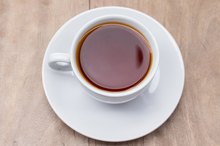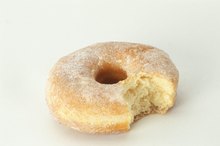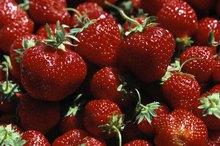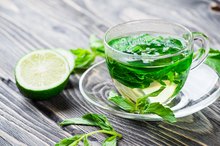Types of Tea on Candida Diet
The most prevalent yeast in fungal infections within the body is Candida albicans. This yeast colonizes the mouth and intestinal tract in up to 67 percent of the population, according to "Fitzpatrick's Color Atlas & Synopsis of Clinical Dermatology." Candida diets were developed to assist in the treatment of fungal infections 3. Certain teas can be helpful in boosting your immune system and in eliminating candidiasis.
Always consult your medical practitioner before using any herbal supplements, including teas. Serious side effects can occur.
Pau D'Arco Tea
The University of Maryland Medical Center states that pau d'arco tea is made from the inner bark of the Tabebuia Avellanedae tree, which is native to South America. Its active ingredients, which have been shown to kill parasites and fungi, are the napthoquinones, called beta-lapachone and lapachol. Side effects include nausea, vomiting, diarrhea, dizziness and anemia.
Anti-Candida Herbal Tea
Edamame on the Anti-Fungal Diet
Learn More
Leon Chaitow, D.O., the author of "Candida Albicans: Could Yeast Be Your Problem?" suggests drinking 2 cups per day of the anti-Candida herbal tea 4. This tea is a blend of the herbs Indian cassia, also called Cinnamomum tamala spice, Shatavri, Asphaltum, Heart-Leaved Moonseed, or Tinospora cordifolia, and Crocus sativus, more commonly known as saffron.
Avoid Caffeine-Rich Tea
According to Dr. Chaitow, you should avoid caffeinated beverages and foods on the yeast-free diet. Caffeine adds a form of nutritional toxicity to your diet, putting an extra burden on your immune system.
Related Articles
References
- "The Yeast Syndrome"; John Trowbridge, MD and Morton Walker, DPM; 1986
- "The Yeast Connection Handbook"; William Crook, MD; 1999
- "Fitzpatrick's Color Atlas & Synopsis of Clinical Dermatology" 5th ed.; Klaus Wolf, M.D., et al.; 2005
- "Candida Albicans: Could Yeast Be Your Problem?"; Leon Chaitow, D.O., N.D.; 1998
- "The Divine Prescription and Science of Health and Healing"; Gunther Paulien, Ph.D.; 1995
Resources
Writer Bio
Writing professionally since 1998, Dr. Christine Princeton has been published with the American Osteopathic Association and the Society for Teachers of Family Medicine. Dr. Princeton received her degree at Touro University Nevada College of Osteopathic Medicine and works as a physician in the fields of hospital medicine and women's health.









